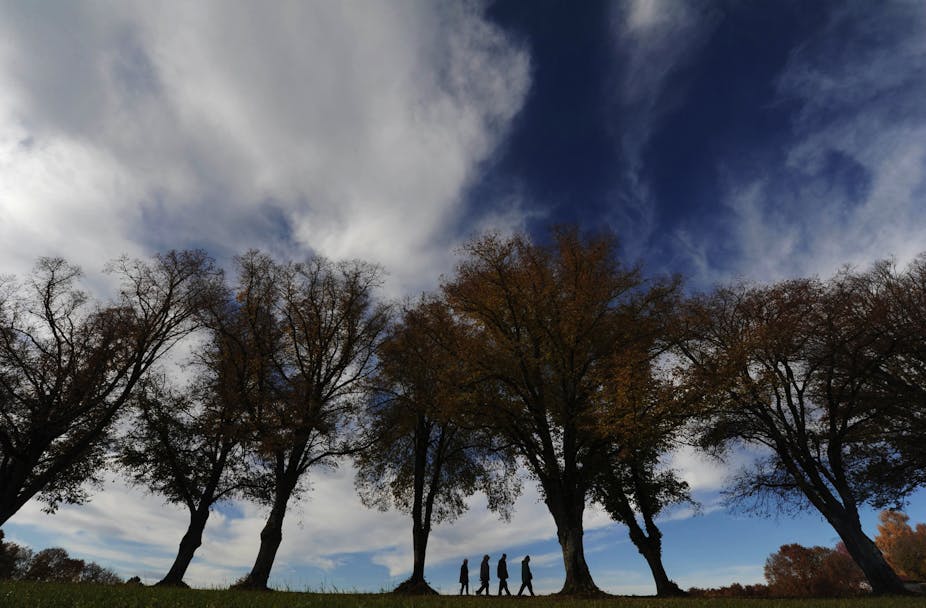Storm clouds are gathering in the world of weather and climate modelling – a discipline that saves lives and property every day and has revolutionised our lives in recent decades.
What we might call the “species” of model developer has been in severe decline, in Australia and around the world. So much so, in fact, that it was given “endangered species” status at a recent meeting of 1,800 climate scientists in Denver, Colorado. How did this happen?
Being a model developer is not an easy job – it requires dealing with difficult subjects such as mathematics, physics and computer science, all at the same time.
Getting with the program
Weather and climate models are sophisticated computer programs with more lines of code than many popular computer games. They require large supercomputers to make their predictions. They are used in making predictions every day.
Literally every weather forecast and seasonal outlook today is based on computer models, which themselves are based on mathematical expressions of well-known physical laws.

Basic forms of these laws are well-known from high-school physics and include Newton’s Second Law (force = mass x acceleration) as well as the laws of the conservation of mass and energy. Applied to the atmosphere and oceans, these laws become mathematical expressions with predictive power and form the foundation for all weather and climate models.
Weather and climate models have underpinned a major societal revolution that has gone largely unnoticed by the public. Weather forecasts five days ahead are now as good as those three days ahead were 20 years ago, thanks in no small way to better models. Seasonal outlooks have become more and more reliable, not just in Australia, but all over the world, thanks to improved computer models of the atmosphere, ocean and land.

The graphic above illustrates the evolution of average weather forecast skill since the 1980s for both the Northern (thick lines) and Southern (thin lines) hemispheres. Note that 60% in this particular measure indicates a useful forecast.
Weather forecasts at all ranges from three to ten days ahead have improved significantly, by about one day per decade. Seven-day forecasts have crossed the “useful” threshold on average and 10-day forecasts are catching up quickly.
Southern Hemisphere forecasts, which initially lagged their Northern Hemisphere counterparts in skill, have now caught up, largely due to the increased availability and better use of a vast amount of satellite data.
Climate models, which now even include descriptions of some basic biology both on land and in the oceans, are regularly used to make projections of future climates. The ever-more reliable model predictions on all those timescales have fundamentally changed the way individuals, companies, governments and society as a whole are making weather and climate-related decisions.
The success in the science of weather and climate modelling has justifiably raised expectations. Predicting hazardous weather, be it associated with cyclones, hailstorms, strong winds or fire, is an important demand on the weather forecasting industry. Most forecasts are model-based, and this leads to a demand – understandably enough – for improved models.

Climate of uncertainty
Supporting climate change mitigation and adaptation decisions requires local and regional information on future climates, a devilishly difficult task for contemporary climate models. So naturally, continued investment in the science of weather and climate modelling should remain high on our agenda.
Which means a continued investment in people.
Behind any great computer code is a group of highly-skilled and creative individuals – in this case weather and climate modellers.
Model developers are first and foremost scientists. A significant reason for the decline in their numbers is the way we measure scientific success.
Traditional measures, based on number of publications and number and size of grants, still determine who is deemed successful. Developing improvements in weather and climate models is a long and often arduous process, one that does not lend itself to many publications and one that many funding agencies – wrongly – do not consider blue-sky research and hence do not fund.
A second problem is that in the past, model development was largely the domain of national agencies; there was very little opportunity for involvement by academia. This has slowly led to a decline in suitably-trained graduates who can take the place of the retiring pioneers of model development, those who built the first generation of weather and climate models in the 1970s.

So what can be done?
Accepting model developers as being an endangered species is the first important step. It implies the need for intervention and change – in short, an endangered species program focused on both improving the species’ habitat and breeding more of its members.
The model developer’s main habitat remains big national and international modelling centres (scattered around the globe). Our own national version of it is the Australian Community Earth-System Simulator (ACCESS), a joint initiative of the Bureau of Meteorology, CSIRO and the university community.
The habitat is functioning, but not thriving, and it faces the same challenges faced worldwide: a decline in its key inhabitants due to below-par funding, scientific rewards systems that disadvantage model developers, and, as a consequence, little incentive for new inhabitants to move in.
Major change and an injection of new funding will be required to make progress.
Growing the species from the ground up is the natural role for academia. This will require a much tighter relationship between academic institutions and national and international modelling centres.
The scientific challenges in weather and climate modelling are among the most difficult in the fields involved; only the best and brightest will be able to overcome them. Functioning habitats will not suffice to attract them – only thriving ones will.

